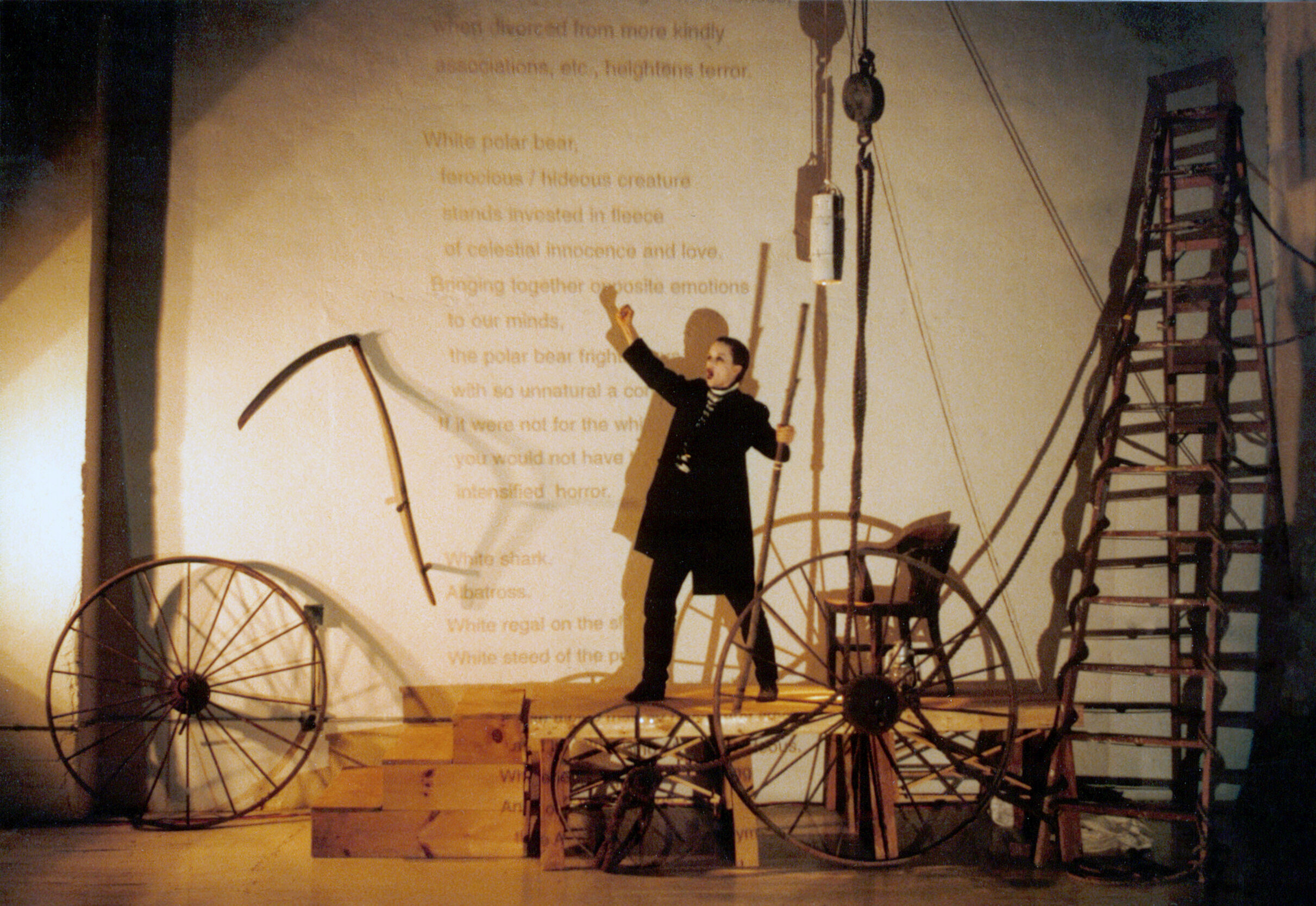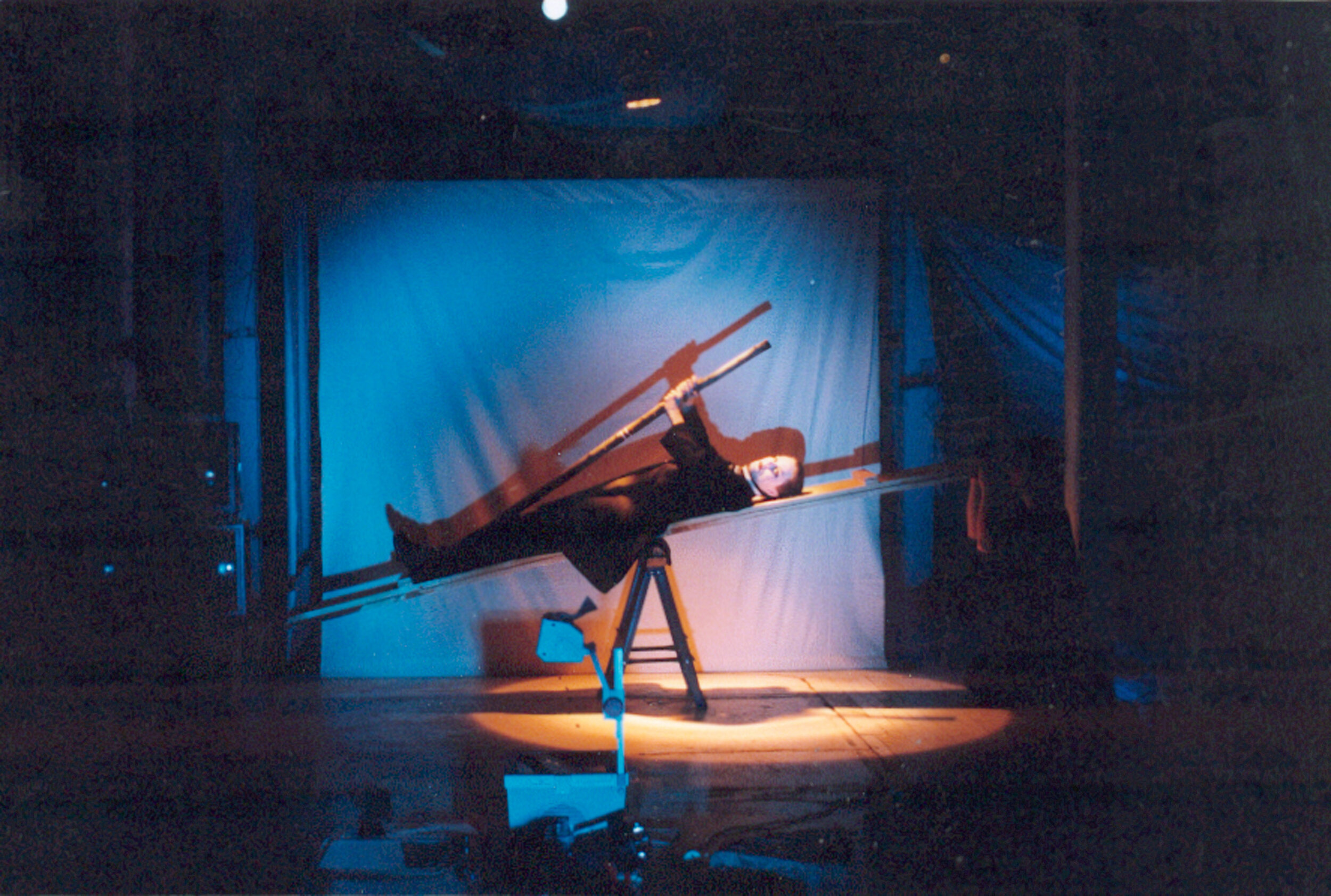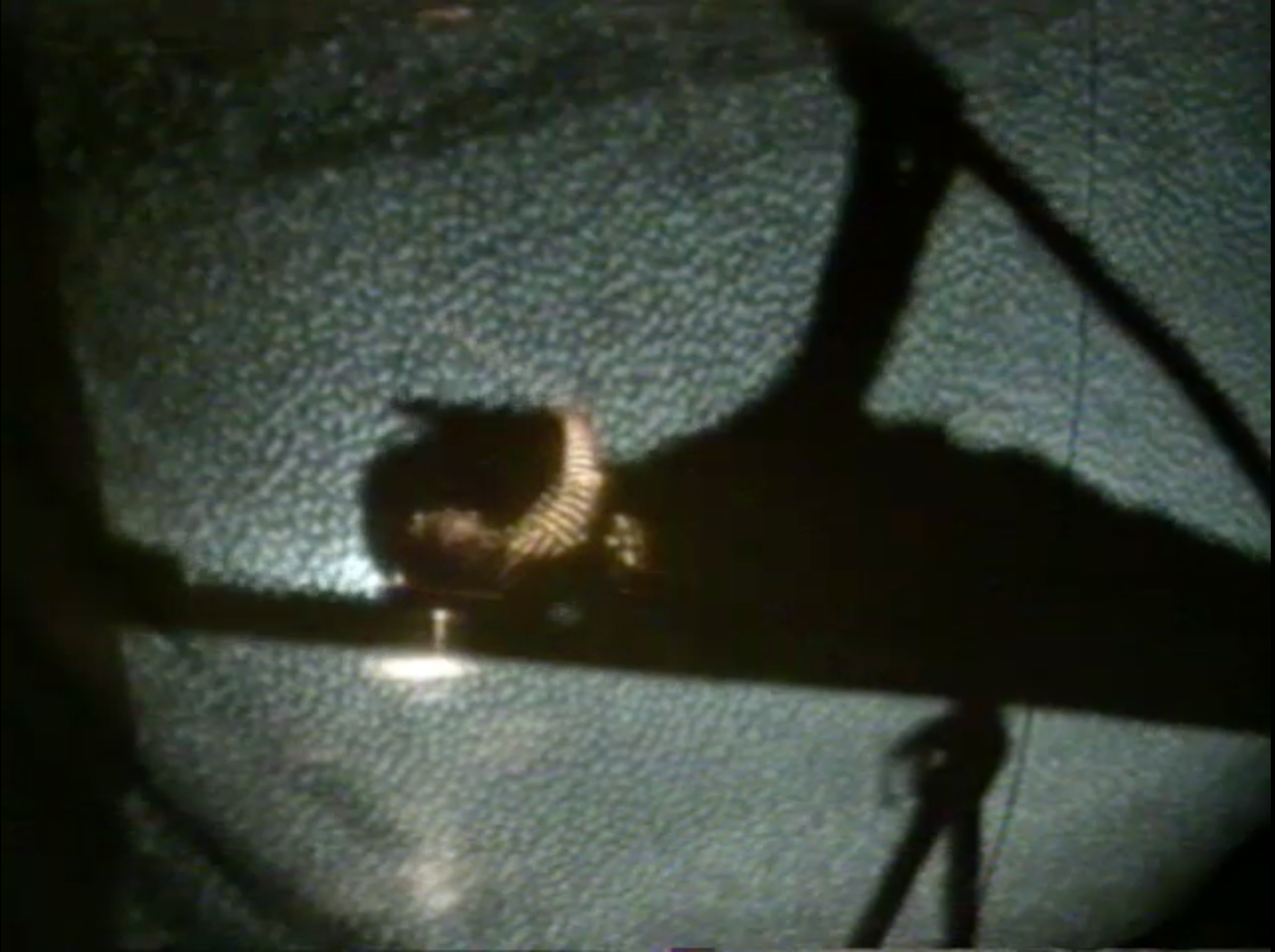
Thoughts on Moby-Dick
In this two-part stage show, Linda Mussmann reinterprets Herman Melville’s epic 1851 novel Moby-Dick nearly 150 years after its initial publication. By integrating overhead projection, live video monitoring, and musical performances ranging from sea shanty to gospel hymn, Mussmann sought to “look at Moby-Dick through the eyes of another century, to place the audience in another way of thinking about the book”.
adapted, designed & directed by LINDA MUSSMANNin collaboration with CLAUDIA BRUCEwith Hunyup Lee, Debra Ruszowski (Chapter 1)with Ryuji Noda, Susanne Helmes (Chapter 2)“Call me Ishmael, call me Mellville, call me Mussmann.”
1995
Chapter 1: Looking Out
1998-1999
Chapter 2: Pursuit
All performed exclusively at TSL WareHouse, Hudson NY
Having never read Moby Dick before, Mussmann took on the daunting task shortly after relocating to Hudson, New York, where Nantucket whalers settled in the 18th century due to the trade access the river provided. Just as Melville gazed upon the snowy Mount Graylock of nearby Pittsfield, Massachusetts while envisioning his infamous “white whale”, Mussmann peered out her window on State Street, conjuring up ghosts of whalers of centuries past. As Mussmann said in 1998:
“Whales are a part of Hudson’s past and present. Obsession is part of the passion of this place. Although it takes a special effort to see the river from the City of Hudson, it is in our thoughts and is part of our identity.”
From the journal of Linda Mussmann, Apr. 19, 1998
“Why Moby-Dick? Why Melville:
Here I live in Hudson, New York. 40 Minutes from where Melville wrote this book. It’s only here that I can produce this project. This region where the book was written — this place where the space was constructed to create a place for work to be made. This is a kind of regionalism in art.
I am from a place.
I am displaced. I am replaced here — with equipage to make work. This Moby-Dick project is about engaging in the place where idea is only. Where we are only. We cannot be replaced. — This project cannot be toured, it can only be seen here in this building in Hudson, New York. Near the Hudson river. 150 years after the book was written.
Everything we do here is about the place where we are working and making. The work is about understanding our place in this time. The challenge is getting the two ideas to merge time and place. Moby-Dick conceived here in this community — re-conceived in this community. (1851-1998)”
“Outside is the 19th Century. Or outside is the 20th Century. Is there a difference?”
Woodstock Times, May 14, 1998:
“On the banks of the river, at the edge of the century, in a town that once supported a thriving industry of whale-refineries, Linda Mussmann has been musing on Herman Melville and Moby Dick. How to take this 19th-century monster of a novel out of academic mothballs, and make its theme of revenge and obsession — of our ‘will to overwhelm nature’ as Charles Olson put it — live for us with renewed immediacy?
One was is to collaborate with artists of equally idiosyncratic creative bent, like Claudia Bruce and Ryuji Noda, in a piece that boils down the stormy essentials of the tale into a single, charged performance — a perforce as concentrated as the tea ceremony that opens it.
‘Ahab lost his leg in the sea of Japan, and the Japanese tea ceremony seems to me one of the best examples [I know] of total obsession’ says Mussmann…
The obsessiveness of Ahab’s quest and the contained intensity of the tea ceremony, she continues, ‘are flip sides of each other — the calm, quiet, [but singleminded] focus of the East, and the violence and aggression of the West.’ Talk about a tempest in a teacup.”
“When the SHADOWS of this life have grown, I’ll fly away”-“I’ll Fly Away”, Albert Brumley, 1929
Sung by Claudia Bruce in Chapter 2
“The heavy pewter lamp suspended in chains over his head continually rocked with the motion of the ship. That forever threw shifting gleams and SHADOWS of lines upon his wrinkled brow. ’til it almost seemed that while he himself was marking out lines and courses on the wrinkled charts, some invisible pencil was also tracing lines and courses upon the deeply marked chart of his forehead.”-Moby Dick, Herman Melville, 1851
Quoted in Chapter 2










